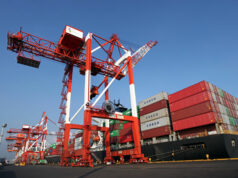Data show state offices catching up with spending plan
By Beatrice M. Laforga
SPENDING CATCH-UP was under way as of July, according to data the Department of Budget and Management (DBM) released on Thursday, as state offices moved to make up for subdued expenditures for much of last semester due to the four-month delay in enactment of this year’s national budget.
The DBM said in a statement that while notice of cash allocation (NCA) — the authority the department gives to state offices to use cash allocated to them — dropped 17% to P1.688 trillion as of July from P2.033 trillion in last year’s first seven months, and NCA used dipped 1.57% to P1.569 trillion from P1.594 trillion, NCA utilization actually improved to 93% from 78% in the same comparative periods.
Line departments themselves used P1.153 trillion out of the P1.244 trillion in NCAs released to them as of July, or about 93%.
Sought for comment, DBM Assistant Secretary Rolando U. Toledo; Carlo O. Asuncion, chief economist at UnionBank of the Philippines, Inc.; and Nicholas Antonio T. Mapa, senior economist at ING Bank NV-Manila, attributed the lower NCA releases to delayed enactment of this year’s national budget that left new projects unfunded in the first four months. Mr. Toledo added that it did not help that there was a 45-day ban on new public works ahead of the May 13 midterm elections.
Still, higher NCA utilization reflected efforts by state offices to catch up with their spending program for 2019.
The DBM said in a statement that “[a] higher NCA utilization rate demonstrates the capacity of line agencies to timely [sic] disburse their allocated funds and implement their programs and projects.”
“These lower NCA releases year-on-year may have been the result of the delayed passage of the 2019 national budget,” Mr. Asuncion said, while Mr. Mapa cited the “backlog” in NCA releases, which have been “coming back on stream only last June”.
“… [B]ut a good sign is that, even in such a short time, the utilization rate is quite high at 93%, showing that some catch-up spending is being done,” Mr. Mapa said.
For Mr. Asuncion, “The DBM probably has been pushing hard for utilization to rise rapidly to help buoy economic growth in the second half of 2019.”
The government had operated on a reenacted 2018 budget from January to April 15, when Mr. Duterte signed this year’s national budget into law but vetoed P95.3 billion in funds that were not in sync with state priorities, slashing the total to P3.662 trillion.
The impact could be seen in official infrastructure and other capital outlays data showing that disbursements fell by 11.7% year-on-year to P311.4 billion last semester, missing a P392.9-billion program for that period by a fifth.
State economic managers and private economists blamed the delay in budget enactment — which left new projects unfunded — for the muted 5.5% economic growth last semester that compares to the year-ago 6.3% and an already reduced 6-7% target for 2019.
Having said earlier this month that the economy would have to grow by at least 6.4% in order to hit the lower end of the 2019 target, Socioeconomic Planning Secretary Ernesto M. Pernia told reporters on Thursday that in order to “hit higher growth rates… we are doubling our efforts… in spending.”
“With the need to increase government spending in [the second half],” I expect budget utilization to continue to rise and make up for the disappointing underspending in [the first half],” Mr. Asuncion said.
Michael L. Ricafort, economist at the Rizal Commercial Banking Corp., said separately that “[t]he government’s catch-up spending may have increased the latest budget utilization rate, which could still go up further with more catch up plans on, as well as further increase in infrastructure spending for the coming months of 2019.”
The DBM, Mr. Toledo said, is “looking forward this third quarter na mag-accelerate ’yan because… we have the catch-up plan for the infra[structure-related] departments — they are already fast-tracking the implementation of their projects.”



